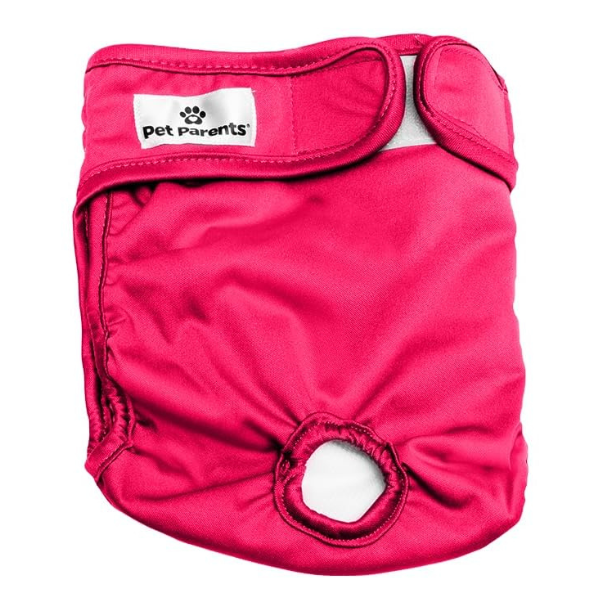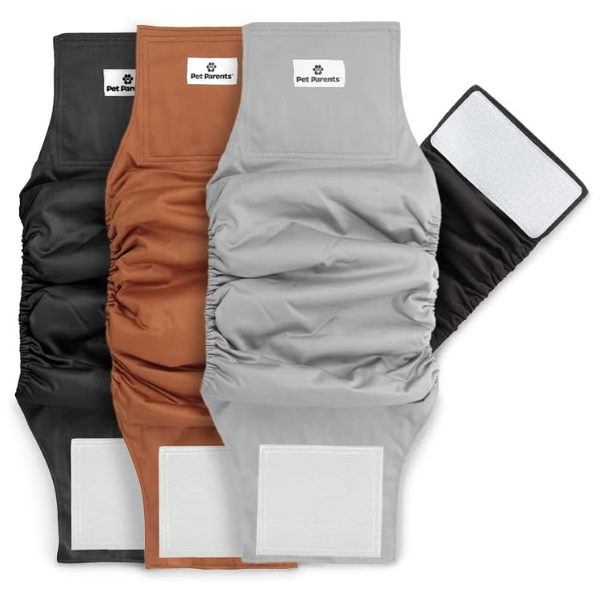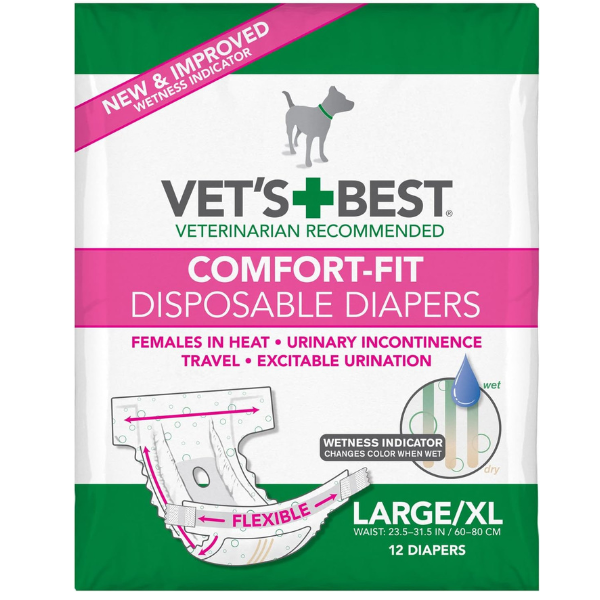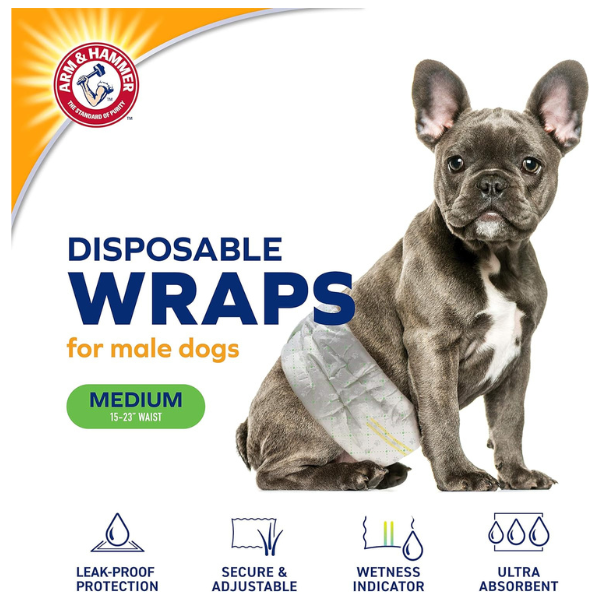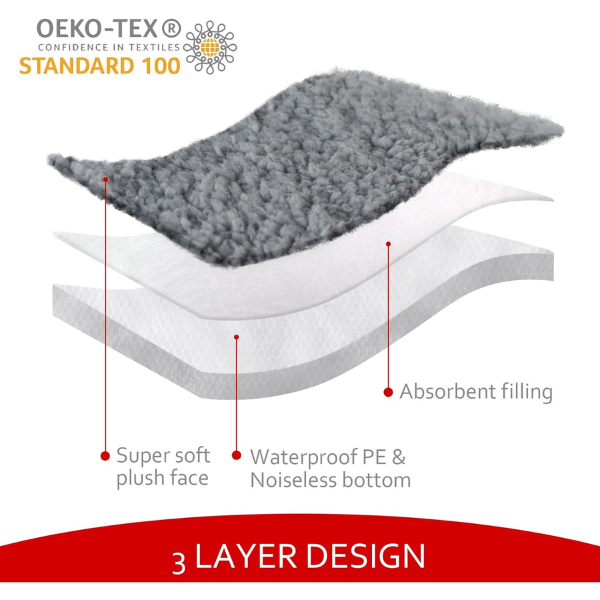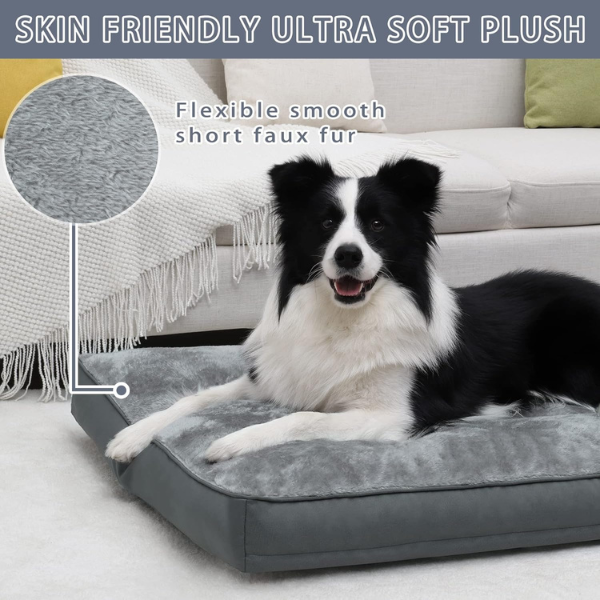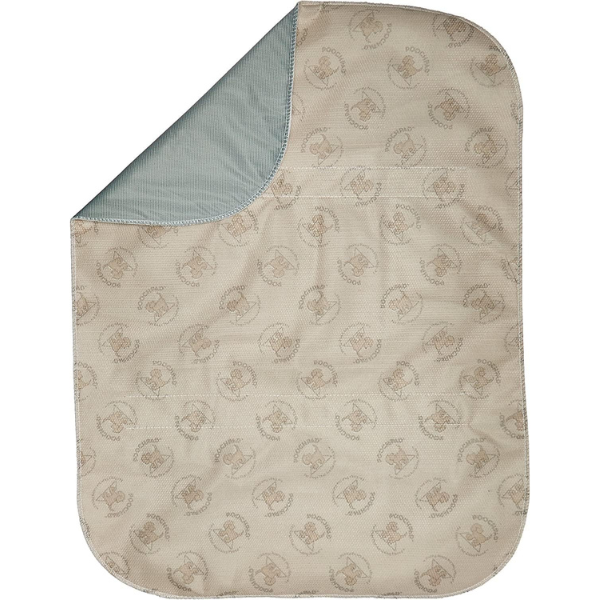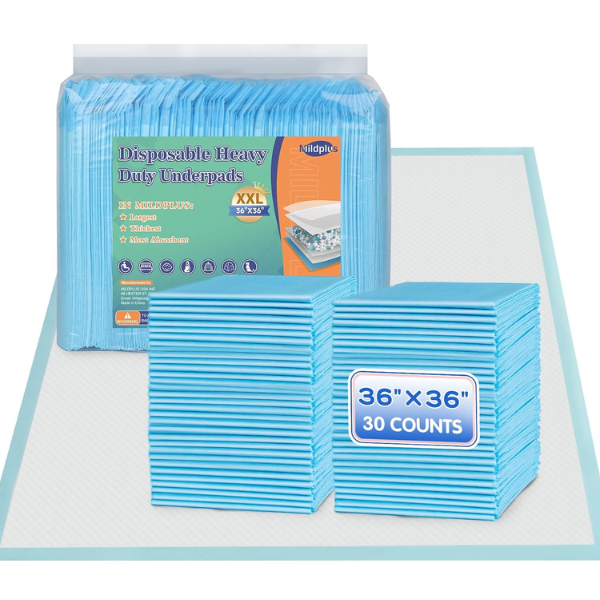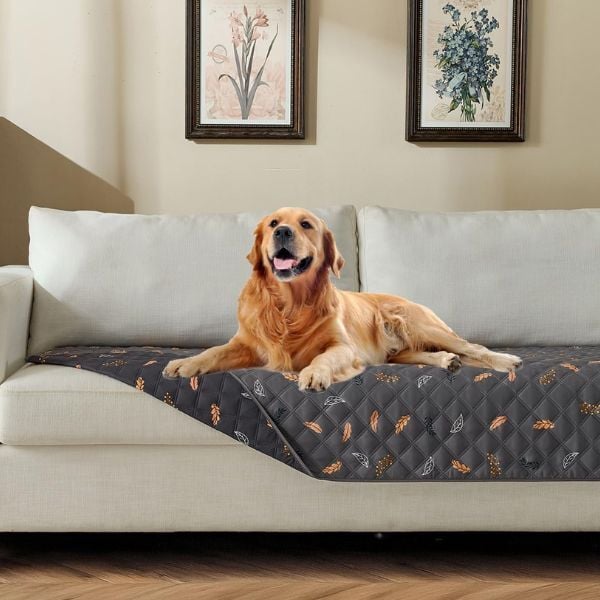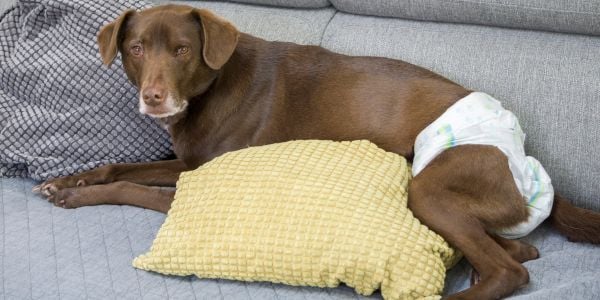 With age comes wisdom — and, in some cases, incontinence.
With age comes wisdom — and, in some cases, incontinence.
Though unspoken, urinary incontinence (urine leakage) is a common issue older people may have to deal with.
In the US, between 15% and 39% of adults over 60 deal with urinary incontinence.
But did you know some dogs must deal with it, too? Well, it is true! In fact, about 5% to 20% of spayed female dogs deal with urethral sphincter mechanism incompetence or urine leakage.
Knowing about urinary incontinence is important since it can cause a variety of problems for your dog, as well as a mess for you. The good news is that there are a variety of treatments, and generally, the condition is easily managed.
Skip to section:
What Is Urinary Incontinence?
I'm going to start with what urinary incontinence is NOT.
- Frequent peeing: If your dog is peeing more often than they used to, it could be diabetes, a urinary tract infection, kidney disease, or another medical condition.
- Potty accidents: If your dog was previously potty trained and is now having accidents inside, there could be several reasons for their potty training regression, including medical conditions like doggie dementia.
- Piddling: If you have a puppy or a young dog that is peeing a little bit or a lot when you approach or pet them, release them from their crate, etc., then they're likely exhibiting excited or submissive peeing, which can be resolved with training after a veterinarian has ruled out urinary incontinence.
Urine leakage can occur with dogs that will not urinate due to stress, fear, or behavioral issues. Holding urine can result in urinary tract infections, urinary crystals, or stones, as well as behavioral issues (barking, chewing, anxiety). In these cases, consultation with a certified canine behavior consultant is recommended once medical causes of urine leakage have been ruled out.
If your dog is not exhibiting any of the above issues, then they're likely dealing with urinary incontinence. Urinary incontinence is the loss of control of urination. The extent of leakage can range from small amounts to large amounts of urine.
Urinary incontinence is a common problem. It is most common in middle-aged to senior female dogs. But female and male dogs of any age can be affected.
Incontinence is also more likely to develop in larger dogs – 12% to 31% of dogs that are 45 pounds or greater suffer from incontinence.
Why Does Urinary Incontinence Happen in Dogs?
There is usually a medical condition that causes a dog to leak urine, and there are a few.
Urethral Sphincter Mechanism Incompetence (USMI)
This condition is also known as hormonal-responsive incontinence or spay incontinence. Though more common in females, it occurs in both sexes within days to years following spay or neutering.
One study in 2017 found that large-breed dogs are at increased risk of urinary incontinence the earlier they are spayed during their first year of life. Though it isn’t clearly known why it happens, it is believed to be a problem with a multitude of related issues.
Urethral Obstruction (a.k.a. detrusor urethral sphincter dyssynergia – DUD)
This condition occurs because of the bladder’s inability to empty properly. The cause of this condition is unknown, but it appears to relate to an incoordination of the smooth and skeletal muscles of the urethra when the bladder contracts.
When male dogs fail to respond to the traditional treatments for USMI, they should be evaluated for this DUD.
Before a diagnosis of DUD is made, diagnostic testing must be performed to rule out other causes of obstruction, such as strictures, uroliths, or lesions that can cause compression of the urethra.
Urinary Incontinence Can Also Be Caused By:
- Neurologic issues such as spinal injuries, diseases, or lesions in the brain
- Birth defects that cause anatomic abnormalities (e.g., ectopic ureters or urethral hypoplasia).
- Vaginal abnormalities such as vestibulovaginal constrictions, vaginal and or recta/vaginal-urethral fistulas
- Urinary tract infections (UTI)
Note: Dogs with urinary incontinence are at an increased risk for developing UTIs. It is important to know the symptoms, which include frequent urination, straining to urinate, crying or whining when urinating, bloody urine, dripping urine, and frequent licking of genitals. - Bladder tumors or other infiltrative diseases of the bladder (e.g., chronic cystitis or urethral stones)
- Abdominal abnormalities (e.g., masses) that cause compression of the bladder.
- Prostatic disease, as the internal urethra is located within the prostate.
- Anatomic abnormalities that cause damage or alter the bladder’s normal function as a result of injury or surgery.
- Canine cognitive dysfunction (aka doggie dementia) can cause dogs to be unaware that they are leaking urine.
Dog's Weight
A dog’s weight appears to increase the incidence of urinary incontinence. Dogs weighing more than their breed's average weight were more likely to have urinary incontinence as compared to those below the average weight for the breed.

Breed Predisposition
Any breed of dog can have urinary incontinence, but there are some breeds that are considered high-risk for the condition. About 3.5% of spayed female dogs have urinary incontinence, but that percentage increases to 15% for those breeds that are high-risk.
High-risk breeds include:
- Bearded Collie
- Dalmatian
- Doberman
- Irish Setter
- Rough Collie
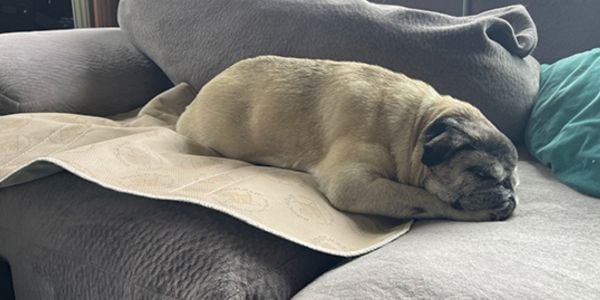
Symptoms of Urinary Incontinence
Pet owners often observe that their dog appears to leak urine when sleeping or relaxing.
In some cases, it is noted by owners that their dog is dribbling urine as they walk or just following urination.
How Is Urinary Incontinence Diagnosed?
A diagnosis is based on your dog’s medical history, clinical signs, blood, and urine tests, as well as abdominal X-rays and ultrasound.
A neurological examination will be done if your veterinarian suspects a neurological disorder is part of the cause. This includes such things as checking your dog’s anal and tail tone, sensation of the vulva, and evaluating spinal reflexes.
In some cases, a urinary catheter is inserted to determine if there is an obstruction or other anomalies of the urethra.
Treatment of Urinary Incontinence
Treatment is tailored to the cause of the incontinence; therefore, proper diagnosis of the cause is critical.
Management of most cases of urinary incontinence is easily achievable.
For the most common causes of urinary incontinence, USMI, different medications are used for treatment. Some of these medications need to be given long-term. Any prescribed long-term medications will require blood and urine tests to be performed regularly to ensure there are no unexpected side effects or other medical issues complicating the situation.
The good news is that these medications are up to 95% effective, and most dogs don't have any more urine leakage.
There are medications to manage DUD. However, some dogs require significant dose adjustments before improvement is achieved. Surgical placement of a urethral stent may be necessary for dogs that don't respond to treatment.
The other causes of urinary incontinence may require one or more of the following treatments:
- Antibiotics
- Prescription diet
- Anti-anxiety medication
- Surgery
Supplements
VetriScience is a brand that I have used for many years in my practice, and their bladder supplement has similar ingredients to the Nutri-Vet product below. Supplements like these are worth trying, as dealing with this issue can be challenging for you and your dog, especially as they age.

This Nutri-Vet bladder supplement was used by a neighbor of a Preventive Vet team member, and with success.
True Story: Sweet Tikka, a boxer/bullmastiff/pit bull mix, has since passed but she suffered from mobility and incontinence issues in her senior years.
"When Tikka started having bladder control issues I had purchased some diapers, but at the same time I purchased this bladder control product (Nutri-Vet). It was amazing!She fully stopped peeing in the house and was able to make it outside. She had always been one to pee a lot and would go out three times a night throughout her lifetime, so this was really a lifesaver for us." – Tikka's mom
Both of these supplements contain Rehmannia Root, which has been known to be a beneficial herb. Allergy warning: both these supplements also contain soy, which can be an allergen for some pets.
How to Manage Urinary Incontinence at Home
Minimize Skin Irritation
Urine leakage can cause skin irritation for your dog. Be sure to routinely clean and dry areas around the vulva or prepuce, the abdomen, and legs (inner and back).
In some cases, a bath may be necessary (use a gentle soap-free shampoo), but for small accidents, you may be able to clean them with pet wipes such as Furbliss.
If their skin becomes irritated, consult with your veterinarian about what you can apply to the skin for treatment and protection.
Lessen the Mess
To lessen the mess around your home and make your dog more comfortable, just like you did during potty training, take your dog out frequently for walks and potty breaks.
Make sure you thoroughly clean areas where your dog has leaked urine, as the smell can be quite noxious not only to you but also to your dog or other pets (their sense of smell is much better than ours!). It might be hard to know where your dog has leaked, so use a UV blacklight to find urine in your home and then use enzymatic cleaners made specifically for dog urine.
You can also use the following products to help with urine management:
Diapers and Belly Bands
Try diapers for female dogs or belly bands for male dogs (there are washable or disposable options). Be sure to wash them in a pet-safe detergent any time they become soiled. Do not put wet diapers or belly bands on your dog, even if clean, as this can increase the risk of infection.
Pro Tip: If using washable diapers, you can use disposable diaper pads to reduce how often you must launder the cloth diaper.
Absorbent Bedding
Use absorbent bedding so that while your dog sleeps or rests, urine will be pulled away from their skin.
Pee Pads and Washable Covers
Preventive Vet dog, Mabel, suffers from incontinence. Her family uses these washable pee pads, and she even chooses to sleep on them, which is great because she often wakes up and starts peeing right away. Because she has mobility issues, she often doesn't make it outside.

As tiring as it may be at times to clean up urine, wash bedding, or give meds, your dog has no control over this, but they are worth every ounce of your effort.



